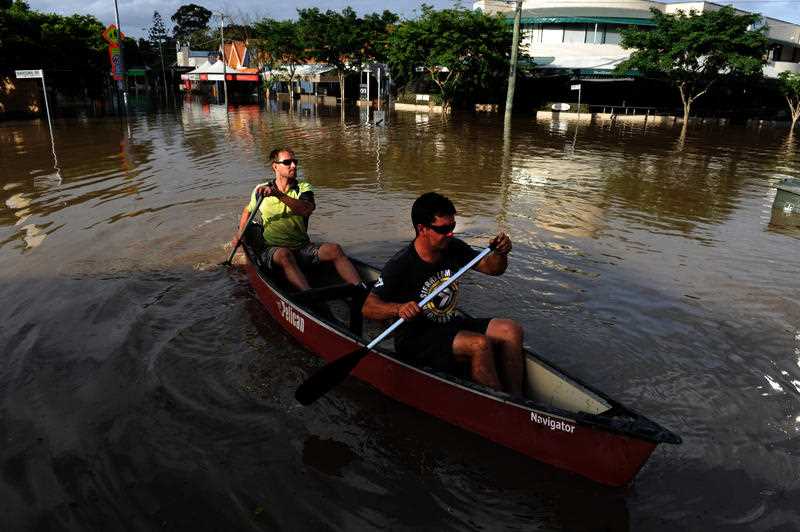La Nina: Australia set for the most rain in a decade
Australia could be in for the most rain it has seen in almost a decade according to a crucial climate driver, the Bureau of Meteorology says.
The bureau moved its La Niña likelihood from watch to alert earlier this week with the climate driver set to occur in spring.
“The chance of La Niña forming in the coming months has increased to around 70 per cent — roughly three times the normal likelihood,” BOM said.
La Niña occurs when equatorial trade winds become stronger, changing ocean surface currents and drawing cooler deep water up from below. La Niña typically brings increased rainfall, cooler temperatures in southern parts of Australia and warmer overnight temperatures in the north.
The bureau said trade winds have been stronger than average in the western or central equatorial Pacific Ocean over two of the last three months and temperatures have dropped.

As for what that means for the average Australian - well, you might want to keep your umbrella handy over the coming months.
BOM’s climate manager Dr Andrew Watkins said the driver results in above-average rainfall across eastern, central and northern regions.
"It typically also brings cooler and cloudier days, more tropical cyclones, and an earlier onset of the first rains of the wet season across the north," Dr Watkins said.
Australian weather: Antarctic cold front to 'steamroll' NSW, Victoria
'In fear for our lives': Adelaide suburb smashed by 'tornado'
Extraordinary drought photos show what a difference rain makes
BOM climatologist Dr Naomi Berger added the climate driver will also bring milder daytime temperatures but we could also see an earlier start to the cyclone season.

The last La Nina event was in 2010-2011.
This 2010-2011 period saw Queensland lashed with a series of devastating floods in a number of river catchments including the Burnett River basin and Brisbane’s river catchment.
More than 78 per cent of the state was declared a disaster zone and 2.5 million people were affected with 33 people killed, according to the Queensland Floods Commission of Inquiry.
The period was Australia’s wettest two-year stretch on record – beating the last two-year period of 1973-74, which was also a La Nina event.

Central Victoria was also flooded in January 2011 with thousands evacuated.
In January 1974, Brisbane was flooded with 16 people killed. It followed three weeks of continual rain.
While it might make for concerning reading, Dr Benger told the ABC the bureau’s predictions didn’t mean we are definitely in for La Nina.
"At the moment there's a 70 per cent chance of it developing, but really how it manifests will depend on the other climate drivers as well,” she told the ABC.
Australia was close to experiencing La Nina in 2017 but BOM said “thresholds were only briefly exceeded”.
Do you have a story tip? Email: newsroomau@yahoonews.com.
You can also follow us on Facebook, Instagram and Twitter and download the Yahoo News app from the App Store or Google Play.




